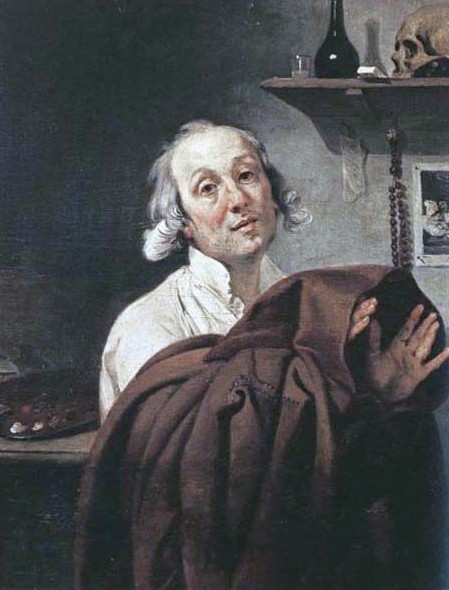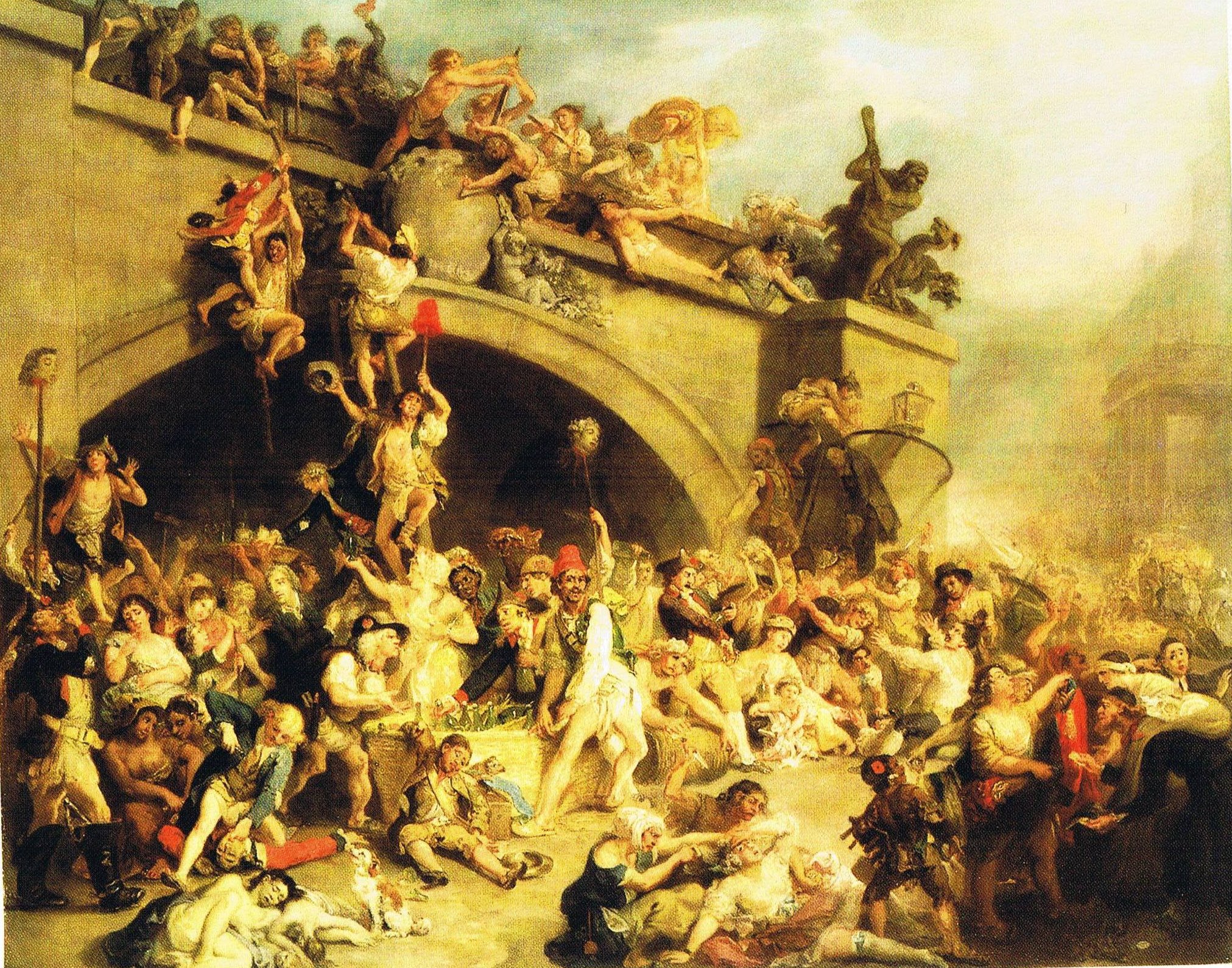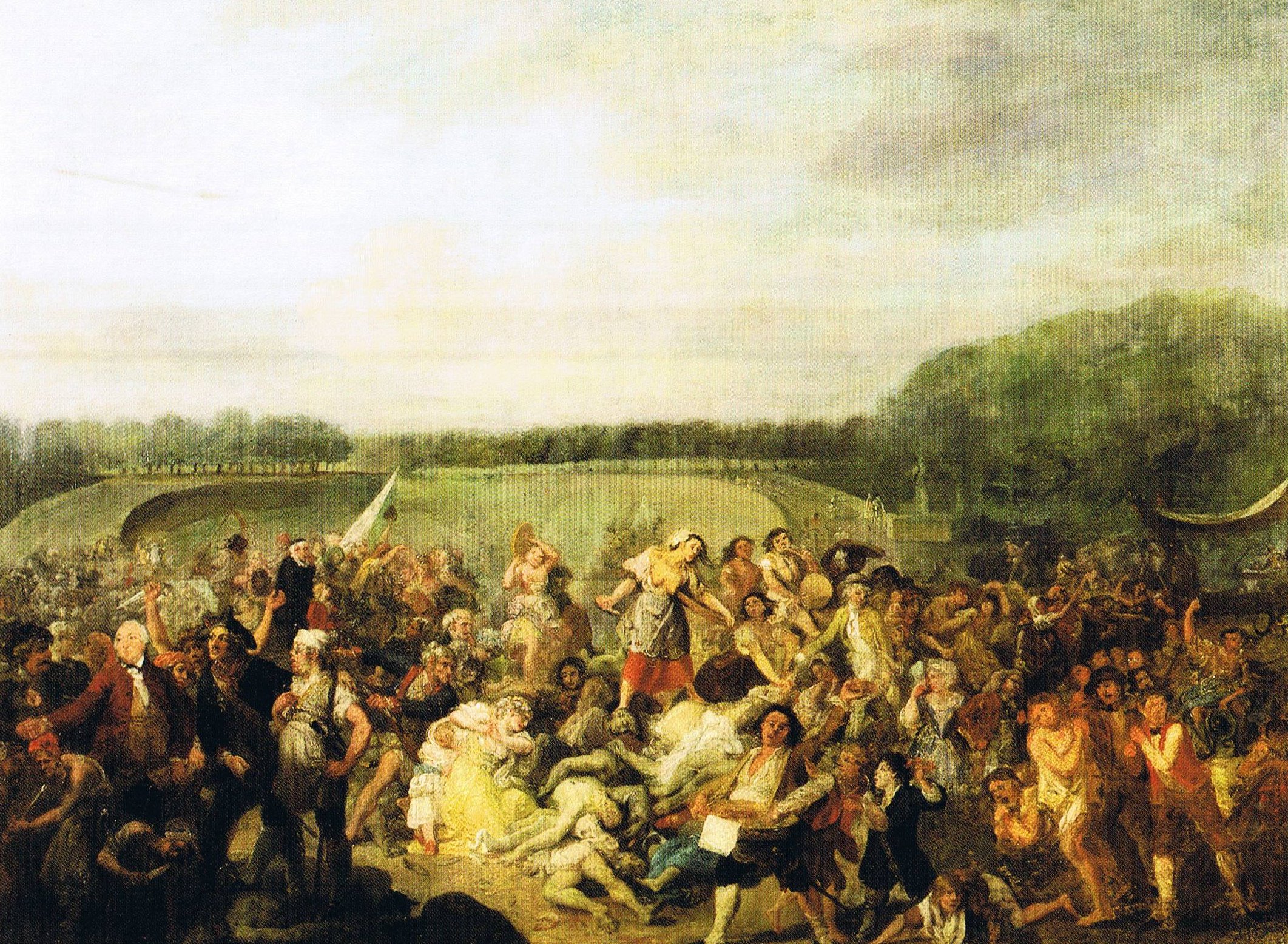A few weekends ago I went to the Royal Academy of Art’s exhibition (sadly now closed) on 18th century painter Johann Zoffany (1733-1810).
Zoffany is largely known for his ‘conversation pieces’, intimate family portraits created for his noble and royal patrons, with his subjects engaged in lively, charming interaction with each other.
This sort of thing.
Queen Charlotte with her Children and Brothers 1771-2
Pleasant, ain’t it? But look a little closer at Zoffany’s work, and you start to see things you might not expect from a painter of his time.
The Tribuna of the Uffizi 1772-78
For example, in this painting of the treasures of the Uffizi museum, commissioned by none other than Queen Charlotte of England, that group of Grand Tourists on the right are most definitely not admiring the artistic merits of Venus (this statue was a well known magnet to young men in an age when sexualised imagery was of course not widely available). And the gentleman admiring the shapely contours of the marble wrestler in the background a little too attentively? None other than Thomas Patch, a real English painter recently exiled from Rome for his known homosexual activities.
Ahh, but we’re on safer ground when we hit the classical predictability of his Flight into Egypt, aren’t we? Erm, no actually, because right on the back of this innocuous looking painting is this bizarre self-portrait of the artist.
Here, Zoffany depicts himself donning a monk’s costume, not as an act of sudden conversion, but in preparation for attending a masquerade. Nobody in the eighteenth century would have needed to be told what sort of thing people got up to at a masked ball, but just in case, hanging on the wall are two condoms. The curator of this exhibitions suggests these may be the first ever depiction of them in art.
Zoffany’s paintings then, were clearly not the confections they might at first glance appear, but it took the tumultuous events of the French Revolution, in the last stages of the artist’s career, to bring these hints of depravity and darkness out of the safety of the background, and put them rawly and immediately at the centre of the artist’s works.
Zoffany painted two works inspired by the Revolution.
The Massacre at Paris, August 10, 1792 – I. Plundering the King’s Cellar at Paris
The Massacre at Paris, August 10, 1792 – II. Celebrating over the Bodies of the Swiss Soldiers
These aren’t interesting as representations of what happened – Zoffany was safely ensconced in England at the time, and the pictures have the lurid, unreal air of the English newspaper accounts on which they were based. What is interesting about them, however, is the visceral sense they convey of the shock, fear and revulsion that many in England felt towards the events unfolding across the channel.
Zoffany, who had spent his life in the mannered civility of high society portrays the events of the revolution as a direct and terrifying threat to that world. The people in these scenes are savage, almost animals. His aristocratic subjects of previous paintings may eye up the odd statue or plan for dalliances at masquerades, but these revolutionaries are brutal, full of passions and ugly desires, free of restraint or civilisation. In Plundering the King’s Cellar we see the bogeymen of 18th century England. Black faces stand out in the crowd, a Jew bids for the coat of a murdered member of the king’s guard. Drunkenness and lust is everywhere. The figures defacing the king’s insignia are almost naked.
In Celebrating over the bodies of soldiers we see an odd foreshadowing of Delacroix’s Liberty Leading the People in the revolutionary woman standing bare breasted in the midst of the crowd. But while Delacroix’s liberty evokes bravery and beckons us towards a bold and exciting future, Zoffany’s is an ugly hag, who promises nothing more than debauchery, wretchedness and ruin.
If Zoffany painted these pictures as a warning of a wold unravelling at the seams, his noble patrons proved oblivious, preferring to keep the revolution out of sight and out of mind, to write it off as an aberration typical of the Frenchies, and certainly not hang such visions on their walls, thank you very much. Zoffany realised they wouldn’t sell, and left the second of these paintings unfinished.






















